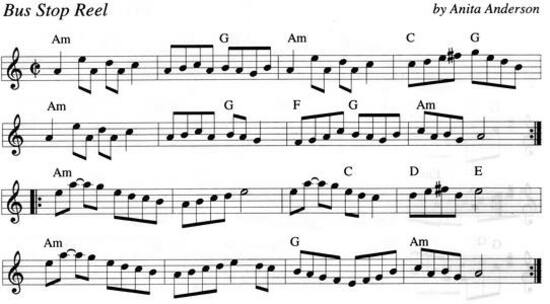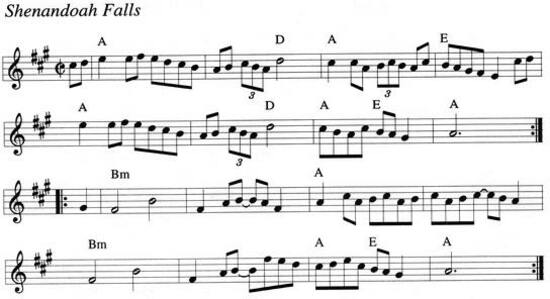Chord Notation |
November 9th, 2022 |
| contra, music |
|: Am AmG Am CG Am AmG FG Am :| |: Am / AmC DE Am / G Am :|
Compare to chords written above standard musical notation:
Each letter normally represents two beats. When there's a different chord for each beat you write them squished together: "AmG" is two beats, while "Am G" is four. A slash ("/") means to stay on the previous chord for another two beats. There's an extra space every eight beats and a new line every sixteen, so you can keep track of where you are in the form. I'll also add extra spaces to line things up vertically to again make it clearer how it fits the form. It works best in a monospaced font.
Here's another example:
|: A AD A E A AD AE A :| |: Bm / A / Bm / AE A :|
Sometimes I'll use numbers instead of chord names, to make it easier to think about what's happening musically. The previous tune would be:
|: 1 14 1 5 1 14 15 1 :| |: 2m / 1 / 2m / 15 1 :|
Note that "14" is "1" and "4" on successive beats, not the fourteenth scale degree.
Comment via: facebook, lesswrong, mastodon, substack

